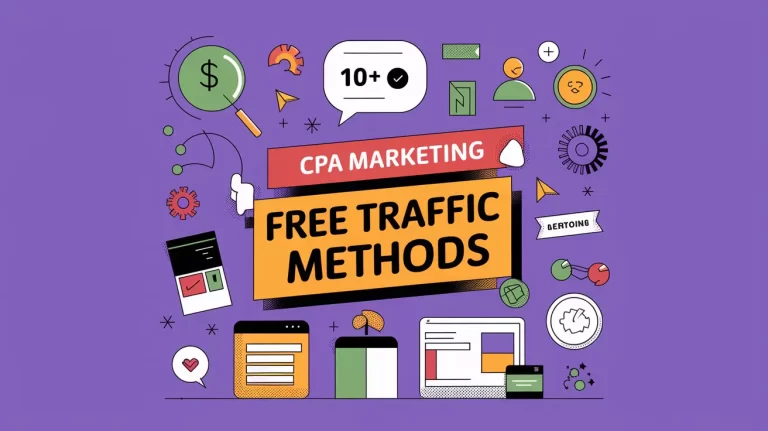Table of Contents
Set Business Goals
The best way to get started with your lead gen program is to write business goals. This is a really important first step. You need to know which business goals your lead gen program will help you attain. Otherwise, you'll have no way to track your success. Now, this second chapter we're getting into is probably the hardest because we'll be talking about a lot of numbers. But I promise that we will get through this together, so please bear with me. How do you write business goals? Well, be SMART about it.
Let me explain what I mean by that. SMART goals stand for Specific, Measurable, Attainable, Relevant, and Time-bound. Let's review how to write SMART goals and then how to use them to predict sales and grow your business. I'll break it down so you can see exactly what I mean. A specific goal is precise, well-defined, clear, and therefore, more likely to be achieved. A goal like increase leads is vague and it lacks clear direction.
A more specific goal would be increase leads by 10% by year-end. A measurable goal indicates progress, keeps you on track, it helps you meet deadlines, and it's motivational as you get closer to achieving that goal. It provides information about how much, how many, or key dates. A measurable goal identifies what's working well that you should keep doing and what's not working well that you need to improve. An attainable goal keeps you realistic.
It accounts for your past performance, current resources, and capabilities, and what your competitors are doing so you know what you're up against. An attainable goal motivates people to succeed because they feel like it's within their reach. A relevant goal aligns what you want to accomplish with what your lead gen program realistically can deliver. So let's say your company wants to grow revenue by 10%. Sure, a lead gen program can achieve that goal. But let's say you have a product or service problem, lead gen can't solve that type of issue.
So talk with your sales force, customers, marketing team, and other stakeholders to make sure you have relevant goals that lead gen can solve. And here's the last one. A time-bound goal establishes deadlines, what needs to be done by when. Set your business goals for the year and then break them down into monthly or quarterly goals. This will keep you on track and enable you to optimize your program consistently, without having to wait until the end of the year.
Now, there are a lot of ways to develop SMART goals. I've included two exercise files for you. Remember when I mentioned before that we'd get into some detailed numbers? Well, here we are. I'll take this slowly. Here are two ways to write SMART business goals. The first, how do you determine how many leads you need to meet a sales goal? Let's say your goal is 50,000 more in sales this year. The average sales price of your product or service is $2,000 and your average lead close rate, which means when you make a sale from a lead, is 10%.
Multiply your average sales price times your average close rate to calculate the value of each lead you need to generate, which in this example, is $200. Then take your sales goal and divide it by the value of your average lead. So $50,000 divided by $200 equals an additional 250 leads you need to generate this year. The second, how do you estimate future sales you can get through lead generation? Well, you multiply the average number of leads that marketing can generate times your sales team's average lead to customer conversion rate.
This will equal your estimated future sales. So let's say that marketing generates an average of 40 leads per month and the sales team's average conversion rate is 5% per month. Then, your estimated future sales is two new customers per month. Use SMART business goals for your lead gen to set the right expectations and set your program up for success.
Decide on key performance measures
Now that you have your business goals, you can write your lead gen program KPIs, which are Key Performance Indicators. Now, KPIs are different than business goals. There are lots of programs across the company that works toward the business goals, so you need KPIs that are specific to your lead gen program. To understand what lead gen can deliver to help attain those business goals, let's go back to the example from the last video. Say you have a business goal to generate 250 more leads this year. Which KPIs will help you understand how your lead gen program will progress toward that business goal.
I'll give you a few examples of KPIs, by specific channels, that relate to generating 250 more leads. And as we get through the rest of the chapters, we'll get into all the details about these channels, but for right now, we'll just talk about how they relate to KPIs. Keep in mind I've written and exercise file for you that will help you through everything we're about to review. Which KPIs you'll measure and when and how you'll measure them.
Benchmark before launching
There's one more step in setting goals and KPIs, benchmarking. Now benchmarking is understanding your starting point, where you stand before you launch so you have a basis for comparison. In this video, we'll just scratch the surface of benchmarking. And later on, we'll come back to these goals and benchmarks to talk about measuring and optimizing. For now, I'll show you two ways to benchmark, by using your company's data and industry data. Now you may not have all of this information, and that's okay. Just benchmark with the information you do have.
You may have this information internally from your research department and you can actually get a lot of this information by searching online. It really just depends on your goals and KPIs. By using both types of benchmarks, you'll understand how your lead gen program is doing compared to your previous performance and compared to the competition. Benchmarks help you understand what's successful about your program that you should keep doing and where you might be running into





